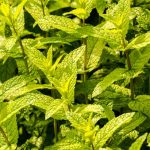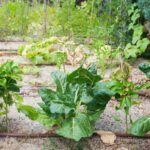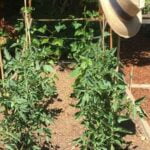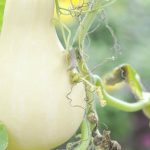Texas organic vegetable gardening has been gaining popularity among gardeners in Texas who prioritize sustainable and environmentally-friendly practices. By growing organic vegetables, gardeners not only produce fresh and nutritious food for themselves but also contribute to the overall well-being of the environment. Choosing to grow organically means avoiding synthetic chemicals and pesticides, thus promoting a healthier ecosystem.
In Texas, where the climate can be challenging for gardening at times, organic vegetable gardening requires careful planning and attention to detail. With the right knowledge and techniques, however, it is possible to cultivate a thriving organic garden that yields bountiful crops. From selecting the best location for your garden to choosing the right vegetables that thrive in the Texas climate, there are many factors to consider when embarking on your organic gardening journey in the Lone Star State.
This article will delve into various aspects of organic vegetable gardening specifically tailored to the Texas environment. From discussing the benefits of growing organically in Texas to providing tips on starting and maintaining your garden, this guide aims to equip you with all the necessary information to create a successful organic vegetable garden in the diverse landscape of Texas.
The Benefits of Growing Organic Vegetables in Texas
Organic vegetable gardening in Texas offers a wide range of benefits to both the environment and individuals. By choosing to grow organic vegetables, gardeners can contribute to reducing their carbon footprint and minimizing the use of harmful chemicals in the soil. Organic farming practices promote biodiversity, conservation of water resources, and the overall health of the ecosystem. In addition, consuming organic vegetables can lead to improved health outcomes as they are free from synthetic pesticides and fertilizers.
One significant benefit of growing organic vegetables in Texas is the preservation of soil quality. Texas soil can be rich but also prone to depletion due to intensive agricultural practices. Organic gardening methods focus on enriching the soil with natural compost and other organic matter, which helps maintain its fertility and structure over time. This ensures that future generations can continue to enjoy productive gardens without resorting to chemical interventions that may harm the environment.
Furthermore, by growing organic vegetables in Texas, gardeners have the opportunity to support local food systems and reduce their reliance on imported produce. This not only lowers carbon emissions associated with transportation but also fosters a stronger sense of community resilience. In a state as vast as Texas, promoting local organic vegetable gardening can help create more sustainable food networks that benefit growers, consumers, and the environment alike.
| Benefits | Details |
|---|---|
| Environmental Impact | Reduced carbon footprint, minimized use of harmful chemicals. |
| Soil Quality | Promotes soil enrichment, maintains fertility and structure. |
| Support Local Food Systems | Reduces reliance on imported produce, fosters community resilience. |
Tips for Choosing the Right Location for Your Organic Garden in Texas
When planning your Texas organic vegetable garden, one of the most crucial aspects to consider is choosing the right location. The success of your garden largely depends on the amount of sunlight, access to water, and soil quality in that particular spot. In Texas, where the climate can be quite challenging for gardening, selecting the ideal location is key to a thriving organic garden.
First and foremost, look for a spot that receives at least 6-8 hours of sunlight per day. Most vegetables need ample sunlight to grow and produce quality yields. Additionally, try to find a location with easy access to water sources. Whether you rely on rainfall or irrigation systems, having water nearby will make it easier to keep your plants hydrated during hot Texas summers.
Furthermore, pay attention to the soil quality in the area you choose for your organic garden. Conduct a soil test to determine its pH level and composition. Vegetables thrive in well-draining soil that is rich in organic matter.
If necessary, amend the soil with compost or other organic materials to create a fertile environment for your plants. By taking these factors into consideration when selecting a location for your Texas organic vegetable garden, you are setting yourself up for success in growing healthy and bountiful crops.
List of Easy-to-Grow Organic Vegetables for Texas Climate
Texas is known for its diverse climatic conditions, making it an ideal location for growing a wide variety of organic vegetables. When it comes to choosing the right vegetables to grow in your Texas organic garden, there are several options that thrive in the state’s unique climate. From hearty root vegetables to leafy greens, Texas offers a wealth of opportunities for vegetable gardening enthusiasts.
Tomatoes
Tomatoes are a staple in many Texas gardens due to their versatility and ability to flourish in the state’s warm climate. Whether you choose cherry tomatoes for snacking or beefsteak tomatoes for slicing, these plants can produce an abundant harvest with proper care and attention. Consider varieties like “Celebrity,” “Early Girl,” or “Cherokee Purple” for optimal results in your Texas organic vegetable garden.
Peppers
Another easy-to-grow organic vegetable for the Texas climate is peppers. From sweet bell peppers to spicy jalapeños, peppers add flavor and color to any garden. Peppers thrive in the heat of Texas summers and can be grown in containers or directly in the ground. Varieties like “California Wonder,” “Anaheim,” and “Cayenne” are popular choices among Texas gardeners.
Squash
Squash plants are well-suited for the warm temperatures of Texas and are relatively low-maintenance, making them ideal for beginner gardeners. Summer squash varieties like zucchini and yellow crookneck squash can produce bountiful harvests throughout the growing season. Plant squash seeds or seedlings after the danger of frost has passed for best results in your Texas organic vegetable garden.
How to Start Your Organic Vegetable Garden in Texas
Starting your own organic vegetable garden in Texas can be a rewarding experience that allows you to enjoy fresh, flavorful produce right from your backyard. To begin, the first step is to choose the right location for your garden. Select a spot that receives at least 6-8 hours of sunlight per day and has well-draining soil. Consider the proximity to a water source as well for easy irrigation.
Once you have determined the location, the next step is preparing the soil. In Texas, organic matter like compost or aged manure can greatly benefit the soil structure and provide essential nutrients for your vegetables. Work this organic matter into the soil to improve its fertility and drainage before planting.
After your soil is prepared, it’s time to select the vegetables you want to grow. Some easy-to-grow organic vegetables that thrive in Texas climate include tomatoes, peppers, squash, cucumbers, beans, and herbs like basil and parsley. Choose varieties that are well-suited for the warm temperatures and long growing season of Texas for best results.
| Step | Description |
|---|---|
| 1 | Choose a sunny location with well-draining soil. |
| 2 | Prepare the soil with organic matter like compost or aged manure. |
| 3 | Select easy-to-grow organic vegetables such as tomatoes, peppers, squash, cucumbers, beans, and herbs. |
By following these steps and selecting the right plants for your region, you’ll be on your way to creating a thriving organic vegetable garden in Texas. Whether you’re a seasoned gardener or just starting out, growing your own organic produce can be a fulfilling and sustainable practice that benefits both you and the environment.
Enjoy the process of nurturing your plants from seed to harvest and savoring the flavors of homegrown goodness straight from your garden to your table.
Maintaining and Caring for Your Texas Organic Garden
Maintaining and caring for your Texas organic vegetable garden is crucial to ensure a successful harvest of healthy, chemical-free produce. Below are some key tips and guidelines to help you keep your garden thriving throughout the growing season:
- Regular Watering: In the hot and dry climate of Texas, proper watering is essential for the health of your organic vegetables. Keep an eye on soil moisture levels and water deeply when needed, typically 1-2 inches per week depending on weather conditions.
- Weeding: Regular weeding is necessary to prevent unwanted plants from competing with your organic vegetables for nutrients and sunlight. Be sure to pull weeds by hand or use mulch to suppress weed growth around your plants.
- Fertilizing: Organic fertilizers can help provide essential nutrients to your plants without the use of synthetic chemicals. Consider using compost, manure, or natural amendments to feed your vegetables throughout the growing season.
In addition to the basic maintenance tasks mentioned above, it’s important to monitor the overall health of your Texas organic vegetable garden regularly. Keep an eye out for any signs of pests or diseases that may affect your plants’ growth and take prompt action to address them in an eco-friendly manner.
Pest Control
Dealing with common pests in a Texas organic vegetable garden can be challenging but manageable with the right approach. Here are some environmentally friendly methods you can use to control pests without resorting to harmful chemicals:
- Handpicking: Visually inspect your plants regularly and physically remove any pests like caterpillars or beetles that you see feeding on them.
- Natural Predators: Encourage beneficial insects like ladybugs or lacewings that feed on pest insects by planting native flowers nearby or purchasing them from reputable sources.
- Companion Planting: Some plants have natural repellent properties that can help protect their neighbors from pests. Consider interplanting herbs like basil or marigolds with your vegetables to deter unwanted insects.
By implementing these practices and strategies for maintaining and caring for your Texas organic vegetable garden, you can enjoy a bountiful harvest of fresh, nutritious produce grown in harmony with nature. Remember that patience, diligence, and perseverance are key factors in successful organic gardening in Texas.
Dealing With Common Pests and Diseases in Texas Organic Vegetable Gardening
Dealing with common pests and diseases is an inevitable part of maintaining a successful Texas organic vegetable garden. However, there are eco-friendly methods and preventive measures that can help minimize the impact of these issues on your garden. Here are some tips and strategies to help you combat pests and diseases sustainably:
1. Companion Planting: One effective method to naturally repel pests in your Texas organic vegetable garden is through companion planting. By interplanting certain vegetables, herbs, or flowers together, you can create a harmonious environment that deters pests. For example, planting basil near tomatoes can help ward off tomato hornworms.
2. Beneficial Insects: Encouraging beneficial insects like ladybugs, lacewings, and parasitic wasps in your garden can also help control pest populations. These insects prey on common garden pests such as aphids, caterpillars, and mites without the need for harmful chemicals.
3. Organic Pest Controls: There are several organic pest control options available for Texas organic vegetable gardening. Neem oil, insecticidal soap, diatomaceous earth, and garlic spray are just a few examples of natural remedies that can effectively combat pests while minimizing harm to beneficial insects and pollinators.
4. Crop Rotation: Rotating your crops each season can help disrupt the life cycles of pests and prevent the build-up of soil-borne diseases. By planting different families of vegetables in designated areas each year, you can reduce the risk of recurring pest infestations.
5. Monitoring: Regularly inspecting your plants for any signs of pests or diseases is crucial for early detection and intervention. Implementing a scouting routine will allow you to identify issues promptly and take appropriate action before they escalate.
By incorporating these strategies into your Texas organic vegetable gardening practices, you can effectively manage common pests and diseases while promoting the health and vitality of your garden in an environmentally friendly manner. Remember that prevention is key when it comes to maintaining a thriving organic garden in Texas.
Success Stories
Texas organic vegetable gardening has been gaining popularity in the Lone Star State, with many gardeners sharing their success stories of growing their own delicious and healthy produce. These real-life examples serve as inspiration for others who are considering starting their own organic vegetable garden in Texas.
Local Community Gardens Thriving in Texas
In various cities across Texas, community gardens have been flourishing, providing fresh and nutritious produce to local residents while promoting sustainable gardening practices. These shared spaces allow individuals to come together, share knowledge, resources, and harvests, creating a sense of community around organic vegetable gardening.
Family-Owned Farms Embracing Organic Practices
Many family-owned farms in Texas have transitioned to organic farming methods, including vegetable production. By eliminating synthetic pesticides and fertilizers, these farms not only produce healthier fruits and vegetables but also contribute to the overall well-being of the environment. Through dedication and hard work, these farmers have demonstrated that it is possible to grow bountiful crops organically in Texas.
Urban Dwellers Cultivating Rooftop Gardens
In major metropolitan areas like Houston and Austin, urban dwellers are turning rooftops into thriving organic vegetable gardens. By utilizing vertical space and implementing sustainable gardening techniques like composting and rainwater harvesting, city residents are able to grow their own food in a limited space. These innovative gardeners showcase that even those living in urban environments can partake in Texas organic vegetable gardening.
Resources for Further Learning and Supplies for Texas Organic Vegetable Gardening
In conclusion, Texas organic vegetable gardening offers a wealth of benefits for both the environment and individuals looking to cultivate their own fresh produce. By opting for organic methods, gardeners in Texas can reduce their environmental footprint, promote biodiversity, and enjoy healthier, chemical-free vegetables. The climate in Texas presents unique challenges, but with the right location selection and choice of easy-to-grow organic vegetables, gardeners can thrive in this region.
To further enhance your Texas organic vegetable gardening experience, there are plenty of resources available for learning and obtaining supplies. Whether you’re looking for tips on best practices, information on sustainable gardening techniques specific to Texas, or the best places to purchase organic seeds and tools, these resources can provide invaluable support. By expanding your knowledge through books, workshops, online courses, or local gardening groups, you can continue to improve your skills and harvests.
Ultimately, success stories from real-life Texas organic vegetable gardeners serve as inspiring examples that showcase the rewards of dedication and passion for sustainable gardening. By following a step-by-step guide to start your own organic vegetable garden in Texas and diligently maintaining it while addressing common pests and diseases organically, you too can join the ranks of successful growers in this state.
Embracing the principles of texas organic vegetable gardening not only benefits you but also contributes positively to the local ecosystem and community.
Frequently Asked Questions
What Veggies Grow Best in Texas?
Texas offers a great variety of vegetables that thrive in its climate. Some veggies that grow best in Texas include tomatoes, peppers, squash, okra, and sweet potatoes. These plants are well-suited to the hot and dry conditions often experienced in the state.
When Should I Start a Vegetable Garden in Texas?
In Texas, the best time to start a vegetable garden is typically in late winter or early spring. This allows the plants to establish themselves before the intense heat of summer arrives. Starting your garden during this time ensures optimal growing conditions for most vegetable varieties.
Is Texas Too Hot to Grow Vegetables?
While Texas does experience extremely hot temperatures during the summer months, it is still possible to grow vegetables successfully with proper care and attention. To combat the heat, it’s essential to choose heat-tolerant varieties, provide adequate watering (often deep irrigation), and consider shading techniques when necessary.
With these precautions in place, you can definitely grow vegetables in Texas despite the hot weather.

If you’re looking to get into vegetable gardening, or are just looking for some tips on how to make your current garden better, then you’ve come to the right place! My name is Ethel and I have been gardening for years. In this blog, I’m going to share with you some of my best tips on how to create a successful vegetable garden.





